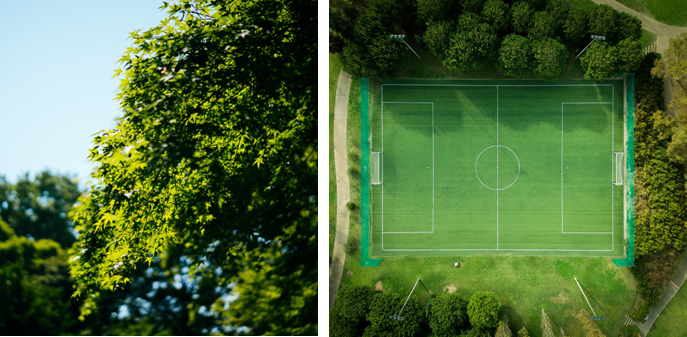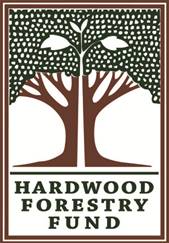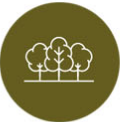What’s Sustainable Forest Management?
The concept of sustainable forest management can be described as the attainment of balance. The balance between society’s demands for forest products and the preservation of forest health and diversity. This balance is critical to the survival of forests and the well-being of forest-dependent communities in all areas of the world.
Here are a few examples of sustainable forest management practices:
- Selective logging – Selective logging is the practice of only harvesting certain trees from the forest instead of clear-cutting or removing all of the trees at once. Selective logging helps preserve the balance of the forest and maintain its valuable assets.
- Maturity – All trees have value but that value increases as a tree matures. Allowing young trees time to mature helps protect the long-term value of the forest.
- Replanting – When a tree is harvested a new sapling is planted in its place. This simple method helps ensure the forest is being restored to its original state.
Forest Inventories
Results recently found in a nationwide inventory mandated under U.S. Federal law (required every 10 years), shows that U.S. hardwood forests are not only growing in size and timber volume but that existing forest management practices are contributing to enhanced forest health and diversity. Nearly all commercial hardwoods in U.S. forests have demonstrated rapid growth in volume throughout the United States.
According to the most recent statistics released by the United States Department of Agriculture (USDA):
- The total area of hardwood forests and combined hardwood/softwood forests increased by 12 million hectares (hectare = 100 million acres) and at a rate of 401,000 hectares every year between 2007 and 2012.
To put things into perspective, the forest is growing at a rate equal to the area of a soccer field every minute.
- The volume of U.S. hardwood growing stock increased by over 130% from 5.2 billion in 1953 to 12 billion m3 in 2012.
- The volume of hardwood standing in the U.S. increased at a rate of 124 million m3 a year between 2007 and 2012. During this time frame, hardwoods grew at a rate of approximately 4 m3 every second!
- The volume of hardwood trees with diameters 48 cm or greater increased from 0.73 billion m3 in 1953 to 2.7 billion m3 in 2012. This is because more forest owners are allowing their trees time to mature before harvesting.
Our Association
 The Decorative Hardwoods Association plays a hands-on role in sustainable forest management through our Hardwood Forestry Fund. This 501(c)(3) non-profit was created to plant the next 100 years of sustainably managed, harvestable hardwoods.
The Decorative Hardwoods Association plays a hands-on role in sustainable forest management through our Hardwood Forestry Fund. This 501(c)(3) non-profit was created to plant the next 100 years of sustainably managed, harvestable hardwoods.
To date, our donors have helped us plant over 5 million trees – American walnut, oak, black cherry, and more – on 7,000 acres of public land.
To learn more or to help replant hardwoods, please visit the Hardwood Forestry Fund or contact us at 703-435-2900 ext. 108.
Interactive Map
This unique, interactive map from the American Hardwood Export Council shows national and regional distribution, growth and removal information for most of the main commercial American hardwood species. Learn more.





